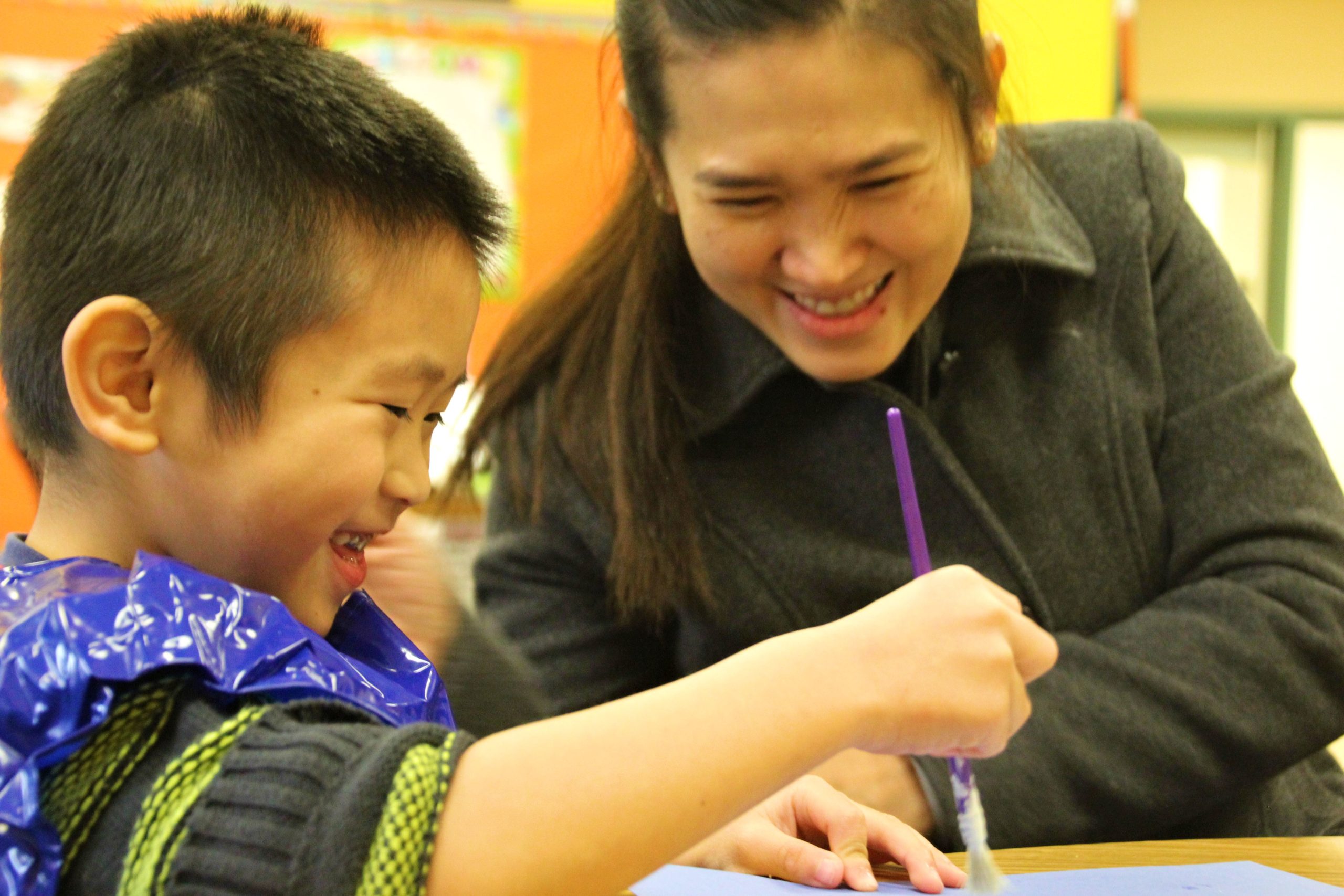The world is one giant playground for toddlers, but it is also one enormous classroom! Toddlers love to learn new things and master new concepts, making it the perfect time for creating a solid foundation for future skills like reading and counting. One of the best things you as a parent can do is to continue to build upon your child’s interest in learning by engaging in lots of fun, everyday activities.
Learning Letters
Children generally begin to recognize the letters in their name around age two making the letters in their name a natural starting point. Display your child’s name nearly everywhere imaginable at home: on the bathroom step stool, in magnets on the fridge, on their bedroom door, in foam letters on the shower walls. Seeing their name displayed and pointed out to them will build recognition over time.
From there, you can also point out and say each letter in his or her name aloud, one-by-one. Once your child has their own name mastered, move on to learning the letters in words like mom or dad, and eventually to the other letters of the alphabet.
Learning Numbers
Numbers are easier incorporate in everyday activities than you may think. You can count buttons on a shirt as you get dressed, orange slices at snack time, or the number of bananas in a bunch the next time you grocery shop. Most toddlers will be able to recite numbers one through ten before they are truly able to count, so having them repeat those numbers aloud, recognize them on flashcards or in a book, or elsewhere may be a good place to start.
Once your child recognizes numbers and is able to count up to ten, you may be ready to move on to critical math skills such as grouping, sorting, and identifying more than/less than concepts. A good activity to try is sorting stuffed animals or other toys by type or color. After your child places all the bears in one pile, cats in another, and elephants in a third, you can then ask questions like, “Which pile has the most stuffed animals?” and “Which has the least?”. A good way to give a hint and to encourage an estimate is to ask which pile is the biggest pile and which is the smallest. From there, test your hypothesis by counting all the animals in each pile.
Learning Shapes
Shapes can be learned by relating them to everyday objects. Next time you have pancakes for breakfast, talk about the shape of a circle. On your next walk, look for things that resemble a circle, such as the wheels of the stroller or on passing cars. You may also cut foods into those shapes by, for instance, taking a square slice of cheese and cutting it into a circle. Be sure to take photos of all the objects in a particular shape you found throughout the day to review before bed. Being able to relate shapes to real-life examples will help in not only solidifying the lesson, but also in shaping critical thinking skills.
Learning Colors
A good way to start learning colors is to designate a color of the day. If the color of the day is green, maybe we wear green socks, eat lots of green beans and green grapes, drink green milk (with the help of food coloring) or out of a green cup, practice pointing out all the green toys we have or other green things we see, read a story about green alligators, and end the day with green fizzy bath tablets.
As you begin incorporating colors into your day, it will become a bit of a habit to point colors out throughout the day by asking your child questions like, “Would you like to wear a purple shirt, or a yellow one today?”, “Would you like more of the red apple or orange sweet potatoes?”, or “Can you find the matching blue sock?”
Once basic colors are mastered, you will be able to move on to hues. Talk about all the variations of blue from sky blue to midnight blue – so dark it’s almost black! Practice sorting items in various hues, or arranging items from lightest blue to darkest, and naming something else they can think of that matches that particular hue. For older children, experimenting with color mixing can be a lot of fun and easily done at home with paint or by using ice cubes and food coloring.
By incorporating learning activities in everyday life, you will see your child’s enthusiasm for learning continue to grow. The best part is, in doing so, you are preparing them for school and setting them on a path towards a successful future.


